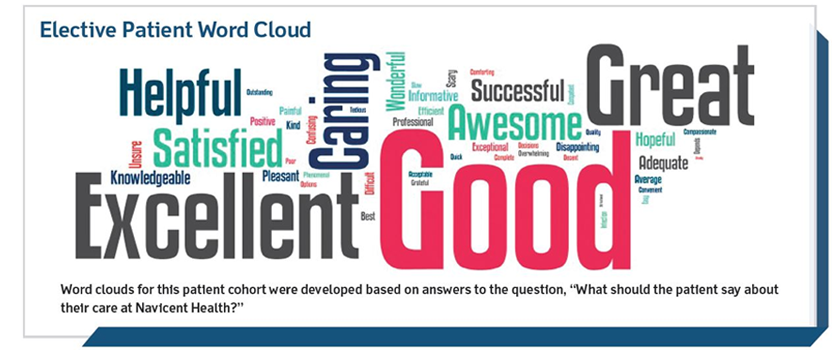
Three years ago, Navicent Health, which serves central and southern Georgia, identified four key objectives that would guide its strategy to become the health system of choice for consumers. One of these is "Engaging consumers in meaningful ways" with a focus on understanding Navicent Health's various types of patient cohorts and what motivates them when seeking health care. Specifically, the strategy team wanted to:
- Understand the value proposition for each patient cohort.
- Determine if Navicent Health was delivering on that value proposition.
- Address opportunities for improvement in real time through patient-journey mapping.
Defining Patient Cohorts Through Research
"Patient mapping is not new; it is an adaptation of the human-centered design concept of consumer journey mapping applied to health care," noted Donald Smith, assistant vice president of patient care services. "Health care providers at times have tunnel vision, but the patient journey mapping exercise provided us with a big-picture view of the patient's actual experience."
In defining Navicent Health's patient cohorts and their corresponding expectations, the strategy team used various data collection methods. These included quantitative surveys, focus groups, in-depth interviews and research response coding. "This is not a quick process," said Christopher Cornue, chief strategy and chief innovation officer. "But once they are identified, meeting those expectations becomes key to creating preferred brands and becoming the service lines of choice for patients." In segmenting its patient population, the team identified four distinct cohorts:
- The occasional patient.
- The complex critical patient.
- The perpetual patient.
- The elective patient.
Of these four groups, the team reasoned that elective patients were the most promising cohort to select for its patient journey mapping project and elective total joint replacement patients in particular. "These patients have a very routine and predictable journey through our health care system," said Cornue. "Our team could easily follow their pathway and identify opportunities for meeting consumer needs so that we continuously improve our processes." The promise Navicent Health created for this population was, "Co-developed with the patient, Navicent Health will ensure the patient achieves their desired outcome by providing options along the care path."
Targeted Marketing to Elective Orthopedic Patients
In order to more effectively reach consumers seeking joint care options, the team began by upgrading the Center for Joint Care web page, which was limited and somewhat outdated. The team stripped the page and rebuilt it with information focused on the consumer's ability to choose, and Navicent Health's commitment to making the joint replacement process as easy and stress-free as possible. With the online information firmly established, the health system ran print ads in two publications with the call to action being registration for an upcoming Total Joint Replacement Pre-Surgery Class. The team also markets the Center for Joint Care via Navicent Health's social media channels, including Twitter and LinkedIn.
This stage also involved listening to consumers' concerns, many of which centered around campus navigation and pain management. The team took those concerns and designed solutions to address them.
Discussions with patients during their journey helped provide additional insights into how well Navicent Health was delivering on expectations. "One of the most valuable outcomes of this initiative was providing feedback in real time to the unit leaders on patient's gain or pain points, which enabled immediate action to be taken," said Mary Hoey, nurse researcher.
Insights Into the patient’s Perspective
According to the team, the best aspect of patient journey mapping was being able to use it as a tool to gain insights into the patient's perspective. "It allows us to see what they identify as gaps or areas of opportunities, and to see what they think are areas of excellence," said Leah Mendez, nurse navigator for orthopedic patients.
"For hospitals and health systems to be successful in the future, we need to change the current dynamic and begin responding to the needs of the patient turned customer, rather than focusing on what works best for providers," said Cornue. "Starting with a promise or value proposition for each type of patient is a good start, but it's the ability to consistently deliver on that promise in patient interactions that will truly make an impact."
To learn more...
SHSMD members, read the full article “Designing the Future of Health Care Consumerism: The Role, Relevance and Revelation of Patient Cohorts” in the Spectrum member newsletter.
Nonmembers, for more content like this, join SHSMD.